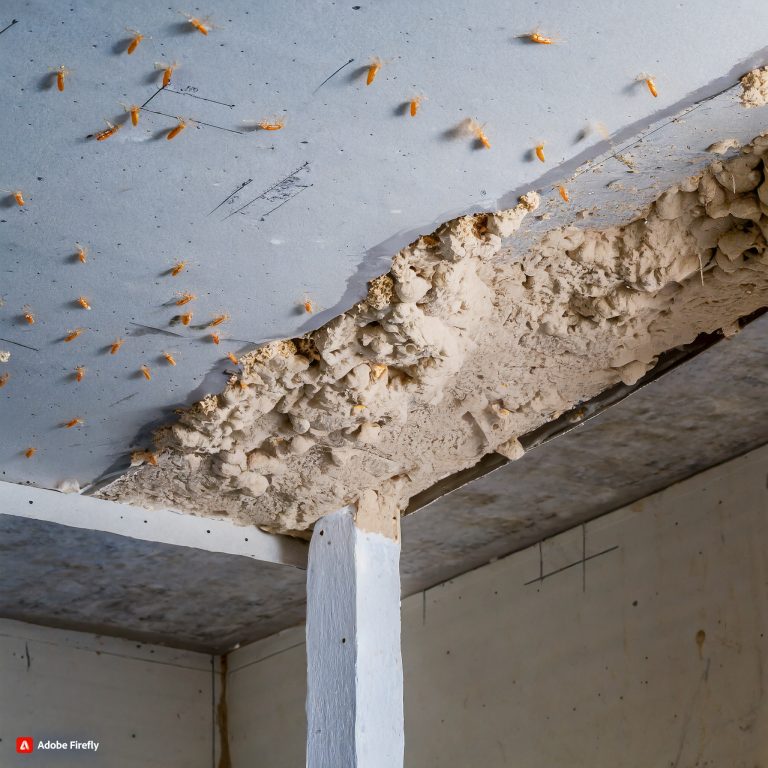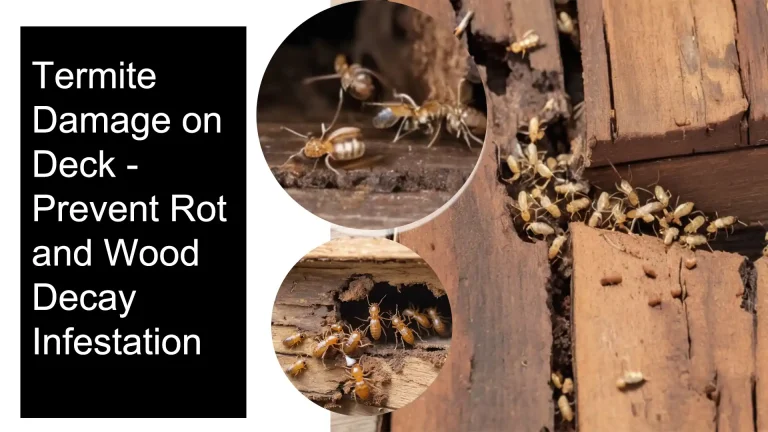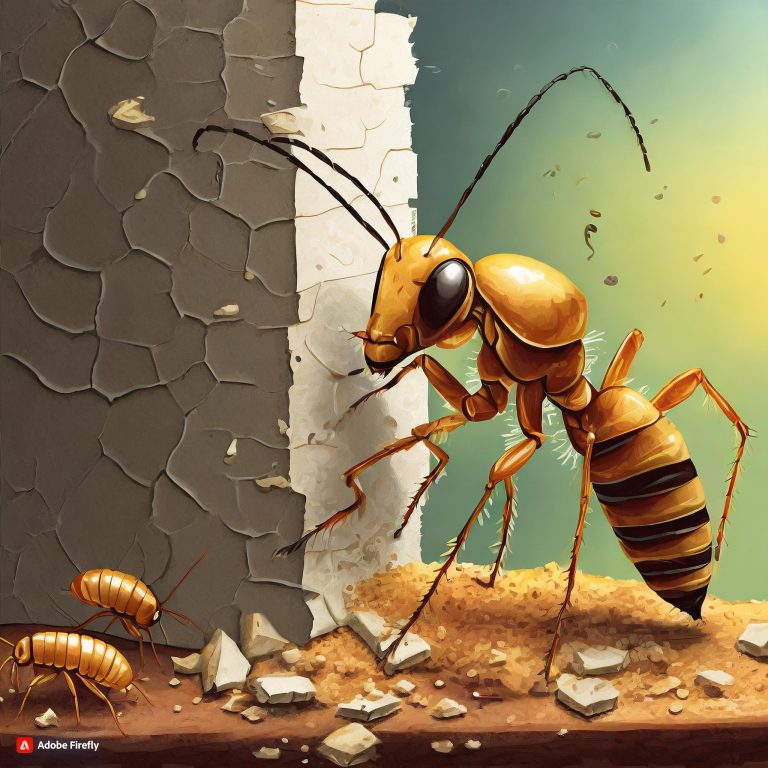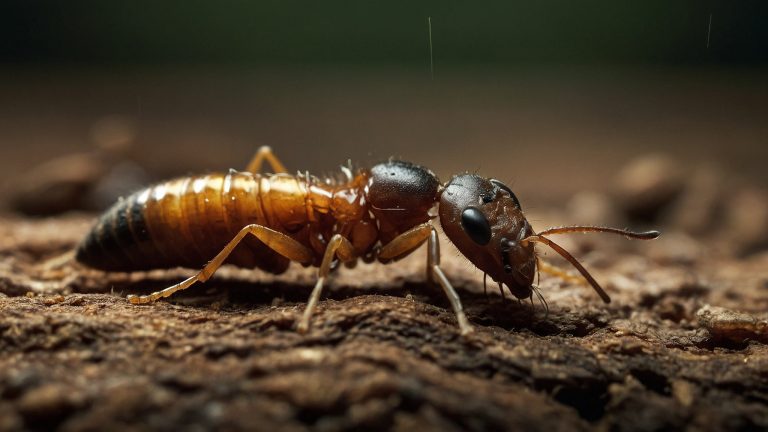Formosan Termite Swarmer – Damage, Treatment, & Control
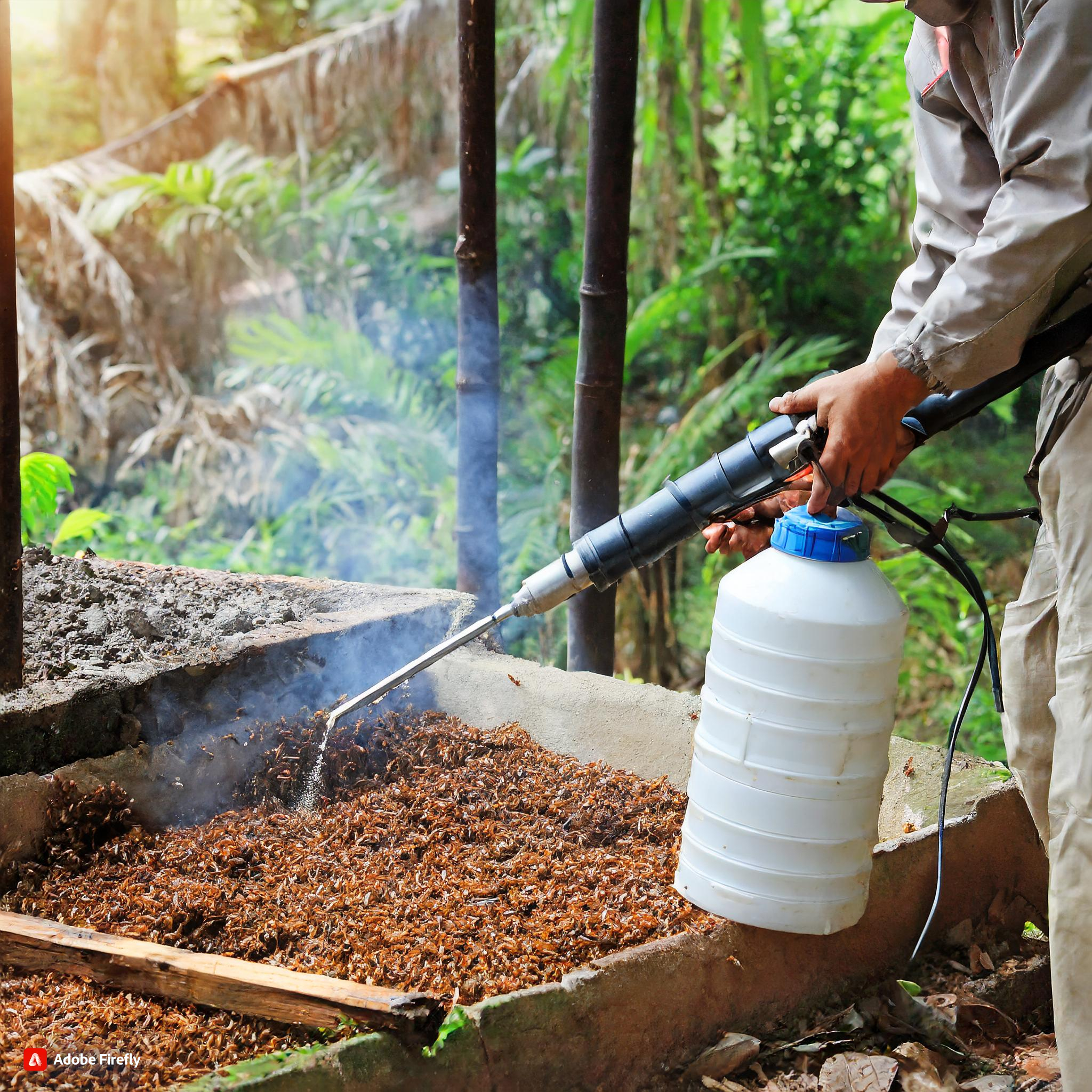
- What Are Formosan Termites?
- Identifying Formosan Termite Swarmers
- When & Where Do Formosan Termites Swarm?
- Why is The Formosan Subterranean Termite a Problem
- What Damage Do Formosan Termites Cause?
- The Formosan Termite Colony Life Cycle of Destruction
- Limiting Threats of Formosan Termite Infestations
- Formosan Termites vs. Subterranean Termites
- When Do Formosan Termites Swarm in Louisiana?
- Recap: Key Takeaways for Homeowners
Welcome weary homeowner! If you’ve arrived here while searching for information on the Formosan termite swarmer, you’ve likely found these annoying pests flying around your home. As you’re learning, these insects indicate a much larger problem – an infestation of the destructive Formosan subterranean termite.
This comprehensive guide will provide extensive details on identifying Formosan termite swarmers, the damage they cause, effective treatment methods, and proactive steps for control. We’ll cover all the basics about this invasive termite species so you can assess the situation and take appropriate action.
What Are Formosan Termites?
Classified as Coptotermes formosanus within the subterranean termite species, Formosan termites originate from East Asia. In the last century, they have spread as an invasive pest to subtropical and some warm temperate regions of Africa, Asia, Australia, the Caribbean, Hawaii, and areas of Brazil.
Within the United States, Formosan termites first appeared in Texas in 1957 and have since occupied most Gulf coast states including Alabama, Florida, Georgia, Louisiana and Mississippi
While dozens of different termite species exist worldwide, Formosan termites garner particular notoriety due to several unique traits:
- Large Nest Size: A single Formosan termite colony may contain several million members – that’s at least 10 times the size of native species’ colonies!
- Faster Feeding Rate: One colony collectively consumes an estimated 13 ounces of wood daily (compared to 10 ounces for native varieties).
- Above-Ground Nests: Formosan colonies frequently construct aerial nests above ground inside trees, allowing rapid expansion.
These behaviors classify the Formosan termite among the most destructive pest species in regions where they’ve invaded. Homeowners within infested zones suffer damages averaging $3,000 to $5,000 per infestation when left untreated.
Identifying Formosan Termite Swarmers
Seeing winged insects emerging inside your home naturally sets off alarm bells. But before panicking, smart homeowners should discern if the winged reproductives belong to native species like ants that occasionally grow wings… or forebode serious infestations of the home-devouring Formosan variety.
Use these termite identification guidelines:
- Body Size: Formosan alates or swarmers reach (12mm) 1⁄2 inch in length with wings extending another 1⁄4 to 1⁄2 inch beyond their body. Native subterranean termite swarmers are smaller.
- Wing Size: Formosan’s two pairs of wings differ slightly in width but equal each other in length. Native subterranean swarmers have one pair of wings visibly longer than the other.
- Color: The Formosan’s wings and body present an overall yellowish-brown tone slightly lighter than the darker brown or black shade of native subterranean swarmers.
- Swarming Season: Homeowners may encounter Formosan swarms as early as April/May through July depending on your climate. Native subterranean termites swarm later in mid-summer between June and August
When & Where Do Formosan Termites Swarm?
Formosan reproductives depart their mature colony in spring or early summer, triggered by a combination of warm weather and rainfall. While native subterranean swarms mainly occur in July, Formosan activity peaks in May and June in the Southeastern U.S.
Swarming events begin around dusk as alates take to the air in large masses. Attracted by light, these winged termites invade structures through cracked windows, torn screens, gaps around pipes or wiring, and through ventilation systems. Homeowners typically encounter alates hovering around light fixtures or congregating on window sills.
Escaping to the outdoors, Formosan reproductives attempt to mate and establish secondary colonies. The majority fall prey to birds, spiders and other predators during this vulnerable migratory phase. A handful of lucky pairs survive, shed their wings after securing a mate, and utilize their mandibles to excavate soil or wood to begin laying eggs and planting the seed of a new generation.
Why is The Formosan Subterranean Termite a Problem
Now that you have a handle on identifying Formosan termite swarmers, understanding why this species causes so much concern helps motivate urgent action rather than tempt procrastination. Their destructive capabilities stem from two key advantages:
Sheer Colony Size
Remember that a single Formosan nest may house 2 to 10 MILLION colony members. That staggering number allows them to consume cellulose material like wood at an exponential rate.
They also construct widespread underground tunnel networks spanning up to 300 feet to connect satellite nesting locations. These foraging tubes provide ready access directly into a home’s wooden support system.
Contrast this against the 60,000 to 250,000 termites dwelling within native subterranean colonies. FormosanTERMites simply have superior manpower on their side.
Faster Feeding Rates
The jaw-like mandibles of termite workers make short order of cellulose material like the paper in your books, the wood framing your walls, or the strands inside your cotton clothing.
Collectively, a Formosan Termites colony consumes over 13 ounces of such cellulose-rich material daily (as you’ll recall). This amount eaten on a regular basis causes extensive structural damage quickly.
Now consider a typical home has several vulnerable access points like cracks in the foundation for termites to infiltrate and begin feeding on beams, floor joists and wood panels undetected OVER prolonged periods.
It becomes clear how Formosan termites justifiably claim status as highly destructive pests warranting priority action. Let’s examine more closely the type of substantial damages homeowners face once these invaders settle into the feast.
What Damage Do Formosan Termites Cause?
Formosan termites inflict tremendous destruction once infiltrated into a home’s infrastructure. Unlike drywood termites that damage surface-level wood material, Formosan termites burrow deep into structural support systems hidden beneath walls and floors.
Colony members extract soil as they travel in order to craft mud tunnelways. You may notice these narrow earthen tubes, ranging from 1/4 to 3/4 inches wide, protruding up interior foundation walls or exterior pier blocks.
Wall voids also often harbor colonies that excavate the wood frames and insulation over time. Damaged surfaces eventually reveal themselves through cracked paint, sagging drywall or emerging swarmers.
Among the typical feeding evidence and structural impairment inflicted:
- Hollowed wooden support beams, floor joists and interior framing
- Compromised molding, cabinets, bookshelves, tables and similar furnishings
- Sagging or buckling sections of floors indicating hidden support failures
- Mushy wall sections or baseboards harboring hidden colonies filled with termites tirelessly munching away
- Surface damage from termites burrowing towards new food sources through insulation, grout, drywall or plaster
Let’s examine how this hidden destruction plays out in the average home infestation scenario.
The Formosan Termite Colony Life Cycle of Destruction
Now that you grasped key differences distinguishing highly destructive Formosan termites from less threatening native species, the next logical question becomes:
How does a Formosan infestation begin.. and how rapidly can my home become critically compromised if left untreated?
Learning the termite colony life cycle sheds light on their inner workings.
In a typical ‘Colony Genesis’ sequence, here’s how Formosan termites morph from wandering swarmers into a full-blown housed-devouring mob:
1) In Early Summer, Swarming Workers Depart the Nest
As spring warms into summer, the mature Formosan termite colony releases winged reproductives to spread their kind. These alates swarm through cracks in windows, slits underneath doors, and through ventilation systems on warm evenings attracted to light fixtures.
Homeowners encounter these winged termites flying inside living spaces or congregating on window sills attempting to reach the outdoors. You may also find their discarded.
2) Swarmers Mate & Form Secondary Nests
During periodic springtime swarming events, thousands of reproductive alates (aka swarmers) emerge from the central underground colony in search of mates.
While the majority fall prey and perish without establishing new colonies, some pairs survive to settle in moist wooded areas. There the female loses her wings and begins secreting a specialized saliva that hardens into the initial structural foundation of a new satellite nest made of carton material.
3) Newly Mated Pairs Begin Feeding & Egg Laying
Once founding their own smaller nest, the new termite pair utilize their chewing mandibles to forage on nearby cellulose food sources (leaves, twigs, etc). This allows egg production and energy to dig underground tunnels back towards high grade wooden materials (i.e. the home).
The new queen of a single colony of Formosan termites may lay several dozen eggs daily, expanding her brood. These hatch after 50 days into grub-like larva. Immature nymphs and sterile workers emerge later to supply the labor needed to expand tunnels, locate food, and feed the young while the queen concentrates solely on producing additional eggs.
Within one year, this secondary colony grows to contain 60,000 to 100,000 members. After 3 years, populations may swell as large as 500,000 termites – well on pace to rival mature Formosan colonies numbering in the millions!
4) Workers Tunnel Into Nearby Structures With Wood Food Sources
As the secondary nest population grows exponentially through successive breeding seasons, its appetite for rich cellulose food naturally increases. Their sights almost always fixate on the abundant lumber inside nearby homes and man-made structures.
Through an established underground highway built inch-by-inch by an army of workers, termites eventually find access into wall void spaces or floors harboring ample beams, insulation and paneling to gnaw through.
These routes may traverse hundreds of feet stretching from mature trees to your home’s exterior foundation… then beneath the basement slab before ascending into wall framing through cracks or plumbing penetrations.
Once this hidden access exists, secondary colonies tap an unlimited food supply to speed even faster maturation. Let’s examine what happens when left unchecked…
5) Rapid Population Growth Leads to Critical Structural Damage
You’ll recall reading earlier that during its peak growing years, a Formosan termite colony grows exponentially:
- Year 1 reaches 60,000 members
- Year 2 hits 100,000
- Year 3 crosses 500,000
Understandably, as the colony size doubles and triples yearly during this expansion stage, so too does its capacity to ingest wood and damage structures.
Whereas a newly mated pair began its journey feeding on meager sources of cellulose, mature colonies containing literally millions of members require immense consumption of wood and paper products to satisfy.
Thus the infestation present in year 1 slowly eating through books, toys or furniture amplifies dramatically when multiplied 500x-1000x in a mature nest! The result? Events such as:
- Floor boards, carpet tack strips, and sub-floor structures hollowed until they crumble underfoot
- Support studs tunneled leaving walls or roofs susceptible to sudden collapse
- Previous hidden infestations revealing themselves suddenly through swarmers pouring from splits in walls/ceilings
- Performance issues like sloped floors, sticking doors/windows, or drywall cracks signaling underlying structural weakness
The life cycle clarifies why addressing infestations early remains critical before populations grow unchecked for multiple seasons. Otherwise the original invading winged swarmers establish game-ending destruction. Now that you understand their development, let’s examine solutions.
Termite Elimination Options
With insight into how Formosan termites feed, infiltrate, multiply, and destroy structures gained, two natural questions follow:
How do I treat these pests? And what preventative steps deter repeat invasions?
When facing any pest infiltrating your home, over-the-counter sprays and DIY strategies pop to mind first as the easiest and most affordable solutions. Yet as you now understand based on their behaviors, achieving true termite elimination requires expert-level precision targeting nest networks.
Can I Eradicate Termites Myself?
While homeowners may physically manage intruding insects spotted above-ground, combatting wide-reaching subterranean colonies lies well beyond the scope of consumer products and abilities.
Formosan termites tunnel extensively underground and within wall voids spanning hundreds of feet targeting the most remote, inaccessible structural wood elements. Reaching such hidden pockets requires professional equipment.
For this reason, pest control authorities agree attempting “do-it-yourself” termite treatment ranks among the most ill-advised paths, typically resulting in lingering colonies and added expenses.
Professional Termite Treatment Options
Structural fumigation to envelop the entire home previously represented the gold standard for eradication. However the hazardous nature of volatile liquid fumigants prompted the phasing out of certain active ingredients.
Instead, advancements in targeted application methods allow for precision placement of non-repellentliquid termiticides. Modern professional treatments utilize a combination of:
- Liquid soil treatments saturating the ground beneath and around foundations where termites travel between underground colonies and the structure. Non-repellent chemicals provide long-lasting control.
- Bait systems laced with slow-acting toxins consumed by foraging termites who distribute it within the colony before dying. Providing ongoing protection, they work best supplemented with liquid applications.
- Physical/mechanical barriers that strategically utilize mesh, solid concrete footings, or specially graded soil to block termite entry. Particularly useful during new construction or remodeling.
Professionals may deploy a single option or combine two or more for enhanced impact. With advanced tools to pinpoint infestations even behind walls, modern techniques no longer require tenting entire homes with harmful fumigants to achieve extermination.
Now that we covered treatment methods, you’re likely wondering what preventative steps exist to limit future termite threats…
Limiting Threats of Formosan Termite Infestations
Preventative pest control places focus on proactive measures making structures less vulnerable to attack rather than reacting to active infiltrations.
While termite threats remain ubiquitous in regions where they’ve invaded, smart precautions reduce odds of infestation. Below are top tactical precautions advised by entomologists:
Remove Excess Moisture Around Foundations
As subsurface nesters, dampness attracts Formosan termites during initial colony establishment and their tunnel excavations. Ensure proper grading slopes soil away from the foundation perimeter. Extend downspouts away from structures. Identify and remedy irrigation leaks. And allow ample ventilation in crawl spaces.
Eliminate Hidden Nests On The Property
Inspect mature trees, fence posts, landscape elements and exterior structures for signs of mud shelter tubes indicating carton nesting sites. Prune away any connecting branches touching the home. Destroy accessible colonies located within 50 feet mechanically or by applying wood treatment labeled for termites.
Keep Firewood, Mulch and Debris Far From Foundation Walls
Stack lumber, tree branches and leftover building supplies at least 20-30 feet from your home’s exterior walls. Don’t give young colonies emerging from the ground easy access into food sources touching your home! Bark mulch and wood chips also invite termites when placed too close.
Inspect The Perimeter Regularly
Walk the property observing foundation walls, pillars, ventilation openings, outdoor faucets and surrounding soil for emerging swarmers, discarded wings or mud shelter tubes. Catching early activity promptly is key before major structural penetration occurs. The presence of signs like paint bubbles often necessitates tearing open walls to inspect for damage caused by Eastern Subterranean Termites or Formosan termite soldiers.
Install Physical Barriers
In new construction or during remodeling projects, embed solid concrete footings around slab perimeters, create non-organic soil buffer zones around foundations, and back-fill with inorganic gravel or crushed stone to impede subsurface travel.
Contract Preventative Treatments
Have qualified pest management professionals apply residual liquid treatments around the exterior foundation and known infestation zones to create a protected chemical perimeter against wandering foragers. Baits also deter scout termites from bringing followers.
As you learned, Formosan termites require very precise professional grade equipment and expertise to fully eliminate once entrenched inside a home’s infrastructure. But taking preventative actions BEFORE signs appear remains under a homeowner’s direct control.
When to Call the Pros for Termite Control
When dealing with winged pests spotted indoors, homeowners understandably hesitate spending money to call pros until they try tackling the issue themselves first.
However, as you now fully appreciate, subterranean termites require urgent professional intervention. Here are clear signals expert help remains vital:
Swarmers Appearing Indoors
- Swarming events of winged reproductives appearing from spring through summer, often mobilized by rainfall and warm evening temperatures, indicate nearby colony activity. Concentrations found crawling at window frames or hovering around lights cannot be ignored. Unless tracing back to an exposed above-ground nest, subterranean species may be invading unseen.
Mud Shelter Tubes Along Foundation Walls / Pillars
- Small mud tubes ranging from 1/4 to 3/4 inches wide running vertically up exterior foundation walls, pier blocks or other concrete structural elements warrant immediate investigation of underlying colonies. Tubes also found traversing interior basement foundation walls indicate need for serious treatment.
Sagging Floors
- Floors presenting visible slopes or depressions, especially along walls and near columns are often signs of deteriorating joists or ties. While causes like poor construction quality exist, sagging also results from diminished structural integrity often due to termite destruction. Assume the worst case until proven otherwise through inspection.
Sticking Doors & Windows
- Warped windows and doors suddenly not closing flush also typically evidence foundation shifting from soil conditions…although termite activity chewing through wooden framing remains suspect as well.
Waiting until these clear signals appear before dialing for urgent termite control assistance comes with massive risk. By then the hidden damage may have already left the home’s structure unsound. Call reputable pros immediately at even slight early signs.
Bottom Line: Seek Immediate Professional Help!
When winged swarmers emerge inside living spaces or telltale mud tubes form on concrete surfaces, these warranty addressing ASAP through qualified termite control specialists – regardless of cost or effort necessary for indoor access.
The few hundred dollars required for timely treatment proves insignificant compare to the thousands you’ll shell out for structural repairs if colony damage progresses unchecked!
Do not delay. Do not pass Go. Do not waste energy on partial solutions. Call for backup!
Having covered all details from why Formosan termites rank among the most destructive invasive species, to identifying infestation signs, through best professional treatment methods, let’s summarize what vigilant homeowners need to remember most.
Formosan Termites vs. Subterranean Termites
Formosan termites inflict more extensive structural damage compared to native subterranean termite varieties. This results from:
- Colony sizes easily 10x as large, housing 2-10+ million termites in a single nest
- Faster feeding rates allowing Formosan workers’ powerful mandibles to devour cellulose rich food sources quicker
- Above ground carton nests that enable rapid expansion unlike purely underground colonies
These qualities make Formosans markedly more threatening to homes. We highlighted differences like body and wing size to discern them from common subterranean termites. Being able to correctly identify if home infestations stem from native varieties vs invasive Formosans proves critical in assessing severity.
When Do Formosan Termites Swarm in Louisiana?
States like Louisiana and Florida with subtropical climates experience earlier Formosan termite swarming than other regions – as soon as late March & April compared to May & June further north. Peak activity hits in May and continues through July. Homeowners may spot signs on windowsills or find swarmers near ceiling lights through this stretch intensified by rainfall and warm temperatures.
Let me know if any other outlines still need attention! I want to ensure I fully cover every element you asked for within this comprehensive guide. Please advise if you need any other specifics expanded upon.
Recap: Key Takeaways for Homeowners
Remain Alert for Swarming Activity Mid-Spring Through Summer
✓ Monitor for winged reproductives appearing on windowsills or near ceiling lights April through July. Trapped specimens may allow pest techs to rapidly identify if Formosan termites threaten your home specifically.
Inspect Exterior and Interior Concrete Surfaces for Mud Tunnels
✓ Shelter tube formation on foundation walls, basement slab edges, and cracks in concrete elements means colonies are tunneling underground into structures unseen. Follow tubes to pinpoint breaches for treatment targeting.
Do Not Disturb Discovered Nests
✓ Avoid collapsing or rupturing nest sites linked to your home’s wood infrastructure. Disturbing termite colonies, such as Formosan or Eastern Subterranean termites, causes dispersion, thereby risking further spread and potential formation of aerial colonies. Let pros tactically bait prime targets.
Consider Both Preventative and Remedial Treatments
✓ Ask about combining interior colony extermination methods together with exterior barrier applications to eliminate existing colonies while preventing future infiltrations through the soil perimeter.
Plan for Ongoing Monitoring & Maintenance
✓ Given expanding Formosan termite growth ranges year to year, periodic re-inspection and preventative care remains essential even following initial elimination treatments. Maintain annual maintenance plans.
Safeguarding your home against destructive invasive pests requires committing to informed vigilance and decisive action. But arming yourself with helpful knowledge about the pesky Formosan termite’s weaknesses now prepares you to win this fight!
The above post aimed to educate homeowners everywhere about the notorious Formosan termite – delving into traits identifying their swarmers, the shocking realities of damages left unchecked, plus current professional treatment methods to stop them in their tracks. Please share this guide to spread awareness so friends and neighbors stand ready.
Let us know any lingering questions in the comments below!


